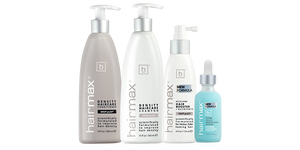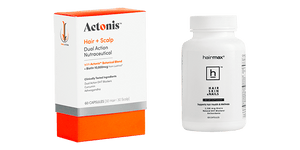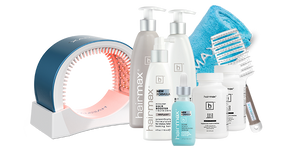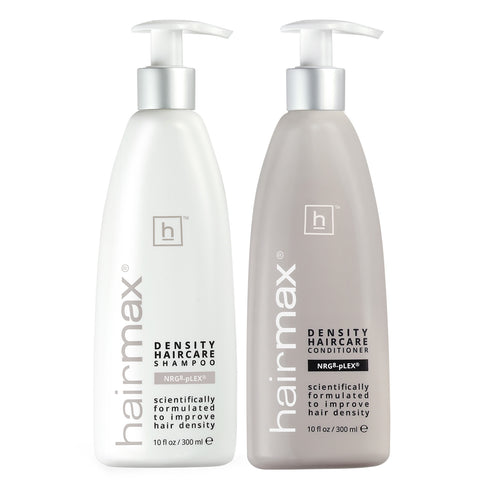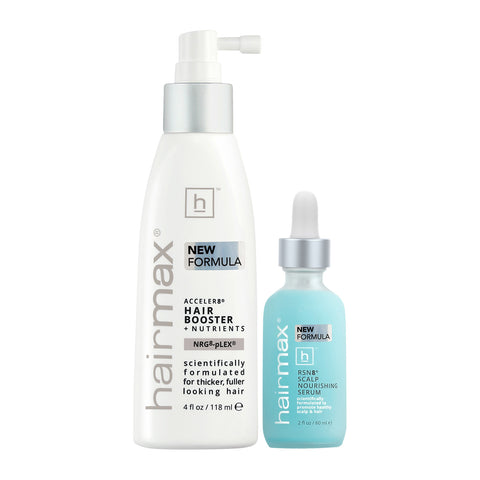With all the various products available on the internet, many people do not realize that there are only 3 products/ingredients approved or cleared by the FDA for treating hair falling out – Low Level Laser Therapy (LLLT) and 2 drugs. This posting will review all 3 options and offer advantages and disadvantages of each.
Low Level Laser Treatment (LLLT) has been proven to work safely and effectively in treating hair falling out. Unlike drugs, the delivery of laser energy to the scalp has not resulted in any reports of internal side effects occurring, and this makes LLLT a good option to consider to treat hair falling out. There are 3 types of LLLT devices that are marketed to treat hair falling out. The first are stationary ‘hood’ devices that are available in many doctor’s offices and salons. While they can be effective, having to travel to a site for an extended period of time for treatment can be inconvenient and time consuming.
The second LLLT option are portable helmet-like devices which are promoted for their convenience and portability. Hair is known as a photoprotectant, which means that it filters light from reaching the scalp, and in the case of sun exposure, to prevent burning of the scalp. Therefore, the main draw-back to these devices is that they deliver laser energy only to the top of the hair, and therefore delivery of the energy to the scalp can be diminished. They are generally applied 2 times a week for about 20 minutes at each session. There are also very few clinical studies conducted with these devices for hair falling out, and those that have been conducted are either on treatment of men or women, but not both. These studies were also carried out either with few subjects, or in studies that were not well designed. These devices can also be very costly.

The third LLLT option are the hand-held devices to treat hair falling out. In particular, the HairMax LaserComb is a hand held portable device that only requires treatment for 8 – 15 minutes, 3 times a week with FDA Clearance for both men and women. The advantage of the HairMax is that is has a teeth device as an integral component of the device, which parts the hair for optimal delivery of laser energy to the scalp.
Also, the fact that it is a hand-held device means it can be used exactly where hair falling out anywhere on the scalp. While there are a number of hand-held devices on the market, none of them other than the HairMax have conducted rigorous scientific studies in both men and women with hair falling out. The HairMax is the only device of its kind to have the results of 5 clinical studies published in a peer-review medical journal.
And, of equal importance, most have not been subjected to FDA review and therefore do not have FDA Clearance for hair falling out. By offering 3 models of the HairMax, the device is affordable for anyone with hair falling out.
The OTC topical drug Rogaine and its ingredient minoxidil are widely touted for effectively treating hair falling out. While there are been some reports of internal side effects occurring from use of this drug topically, it is generally safe to use. Further, minoxidil is the only topical drug that is FDA approved to treat hair falling out in both men and women. The limitations to minoxidil is that it has only been proven to work only on the vertex or crown of the head. Minoxidil has to be applied 2 times a day, and it can be messy and inconvenient to use. Minoxidil has to be used indefinitely because discontinuation of treatment produces a return to hair falling out. Some women have reported an increase in facial hair from contact with the drug with the face.

The RX oral drug finasteride, marketed as Propecia is the only oral drug that is FDA approved for treating hair falling out in men. The drug is not approved for use by women. Finasteride works best in slowing the progression of hair falling out in men, however it has been found to have some effect in stimulating new regrowth. Propecia has been proven to be effective in treating vertex (crown) balding more than frontal hair loss. The main draw-back to the drug it that it has the potential to produce sexual side effect in men, including decreased libido. There have also been reports that some of these side effects are permanent after discontinuing Propecia, although this has not been conclusively proven. Finasteride must be taken indefinitely because discontinuation results in gradual progression back to hair falling out. A study was conducted in postmenopausal women, but no beneficial effect was found in treating hair falling out in women.

All of these treatment options can be used alone, or combined as many physicians have found that they work synergistically to treat hair falling out.
In conclusion, hair falling out is not something that anyone has to ‘live with’ and ‘suffer in silence’ any more. There are 3 FDA approved/cleared options available for men, and 2 options for women with hair falling out. Since hair falling out is an aesthetic condition, the decision to treat it with drugs or LLLT must be carefully weighed. All 3 treatment have similar efficacy, but LLLT and the HairMax have shown over time that the device is not only effective for hair falling out, but safe to use and this should be a major consideration when deciding which course of treatment to use.

